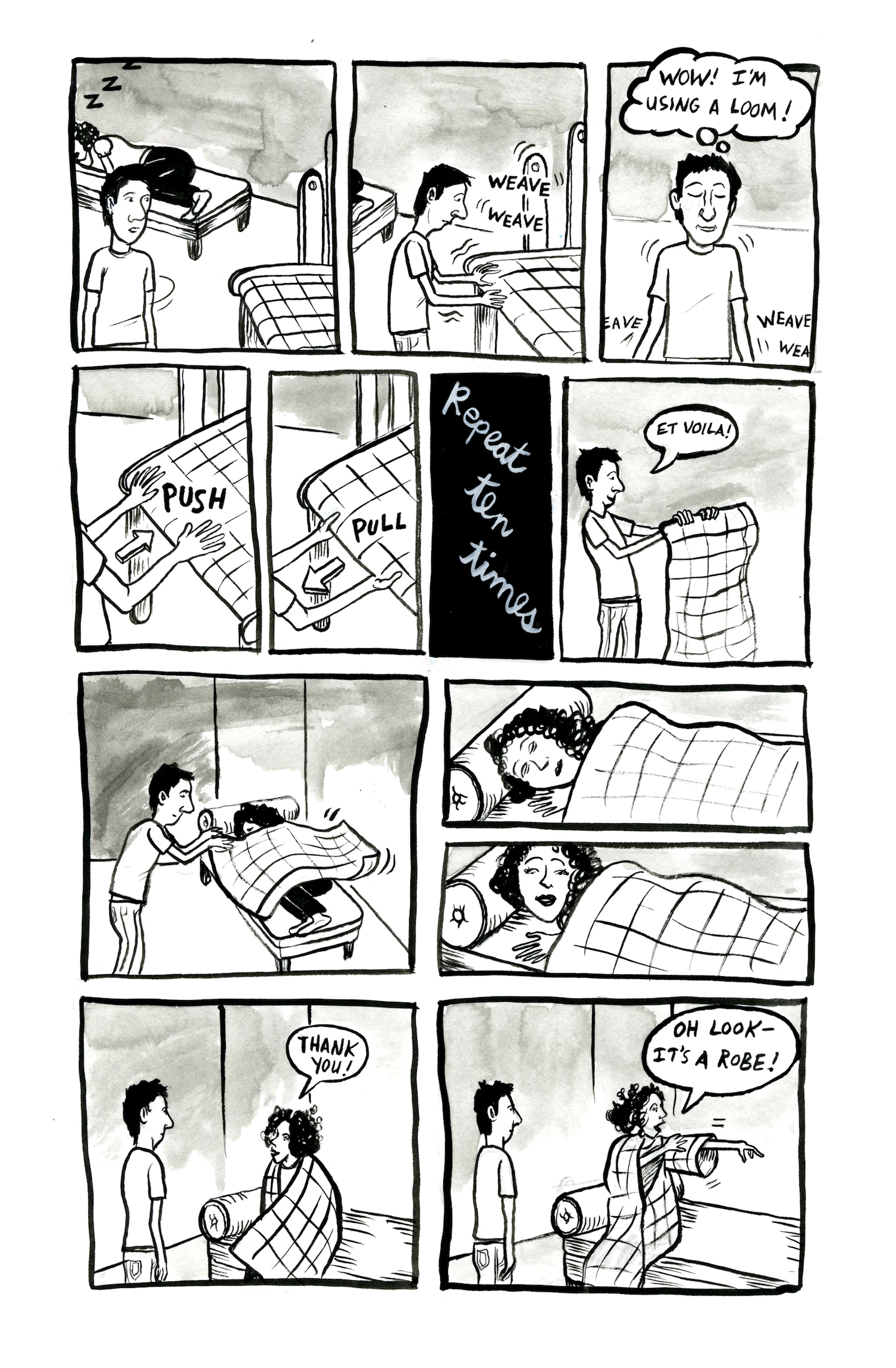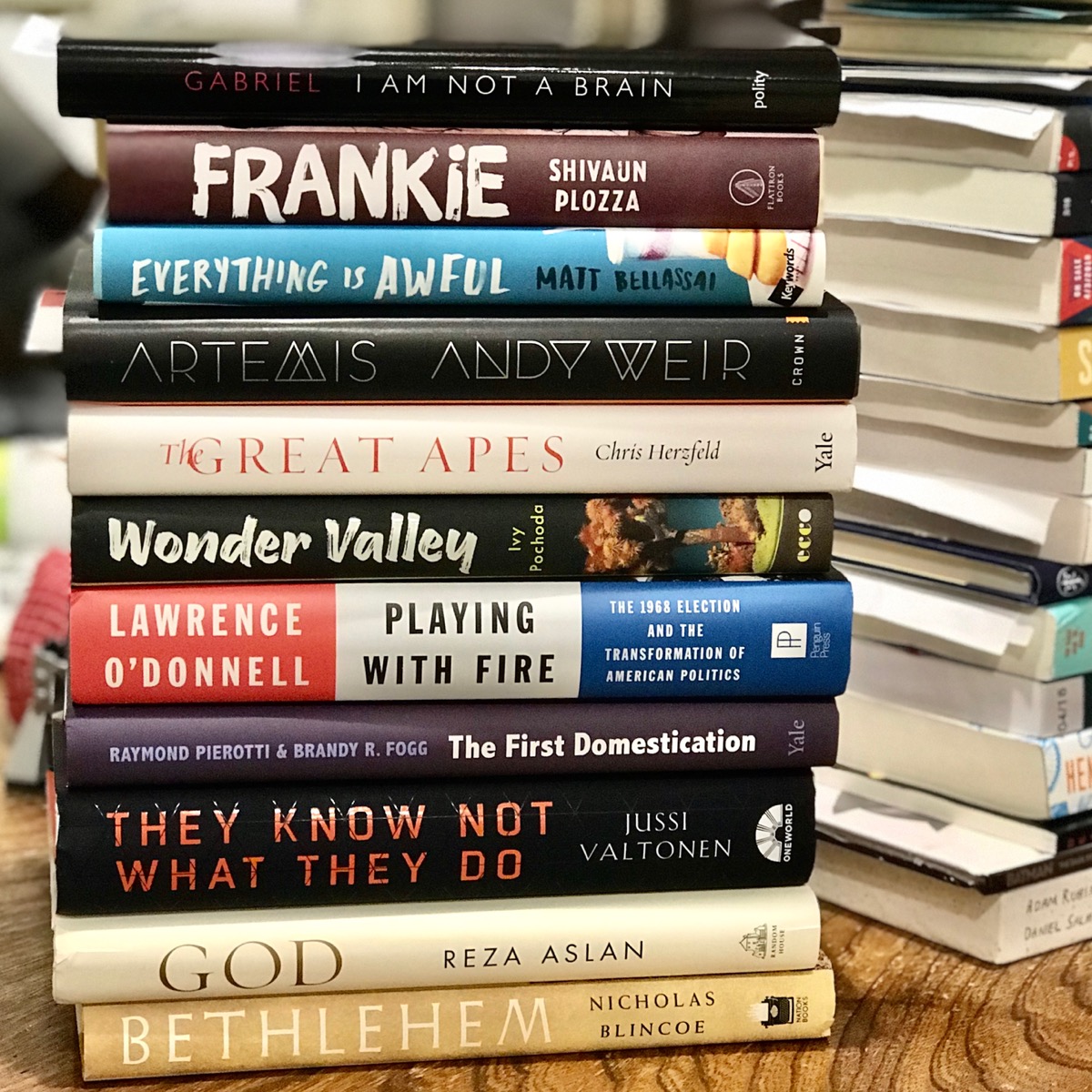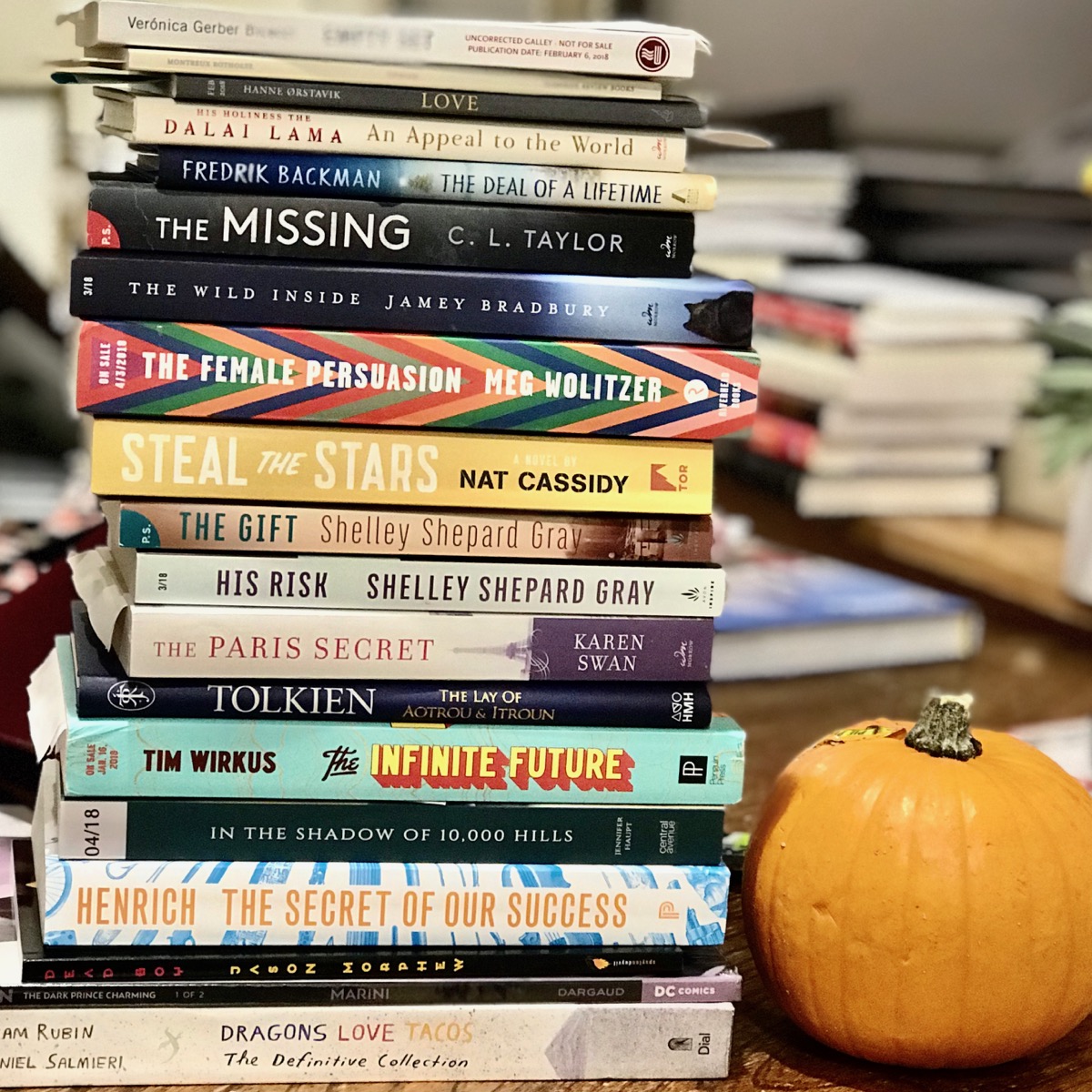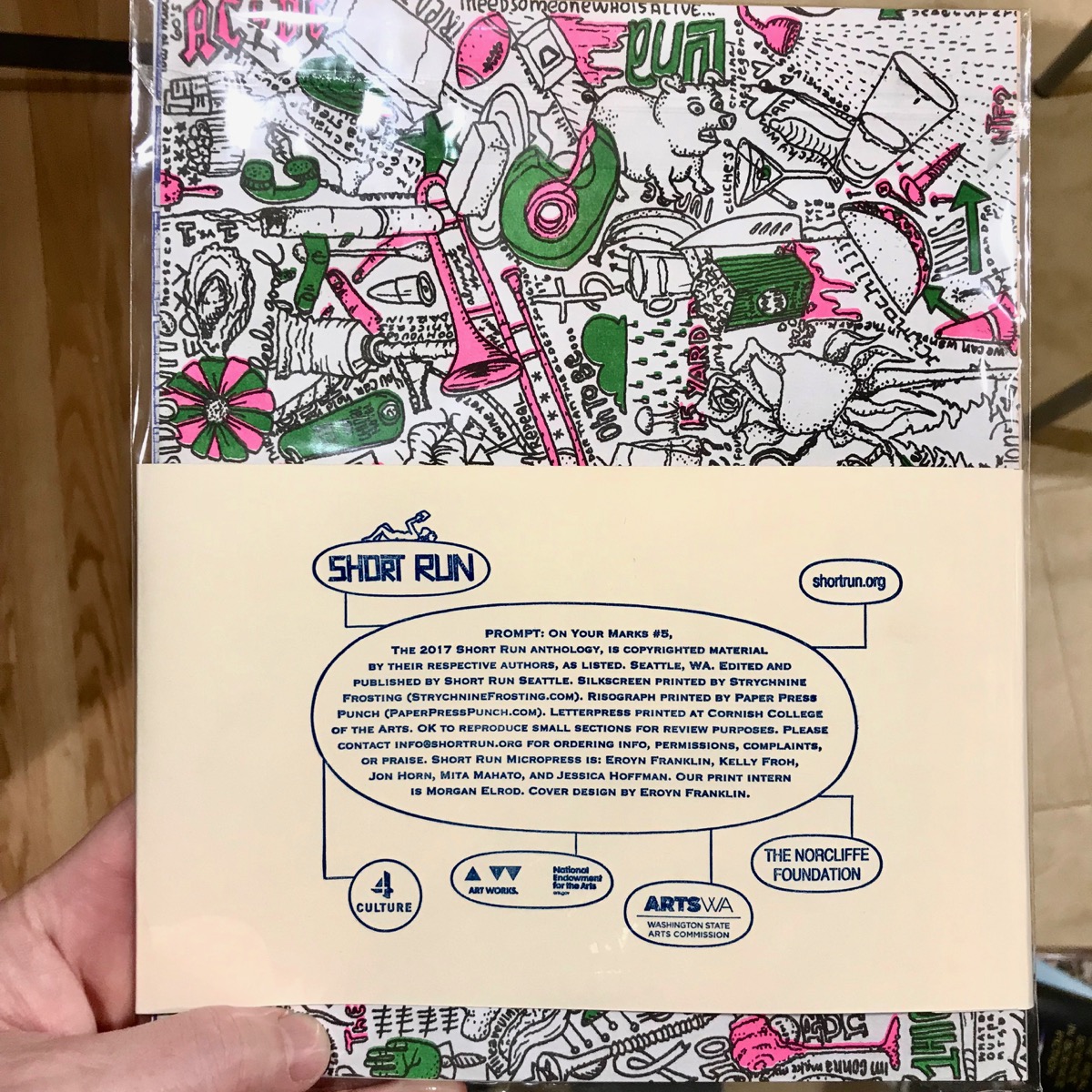Portrait Gallery: Nikki Giovanni
Each week, Christine Larsen creates a new portrait of an author for us. Have any favorites you’d love to see immortalized? Let us know
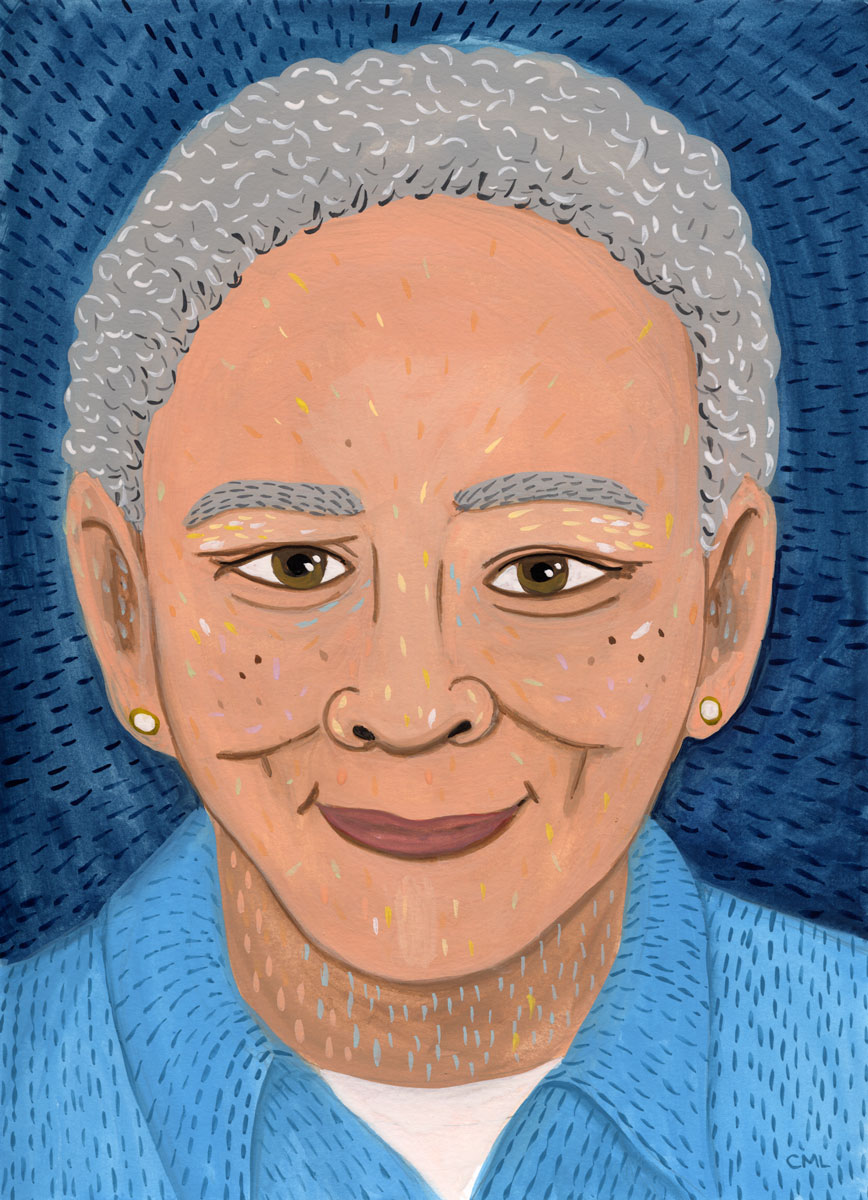
Nikki Giovanni
Poet, author, educator and activist, Nikki Giovanni has written over 30 children’s books and poetry collections.
https://www.poetryfoundation.org/poets/nikki-giovanni
http://www.nikki-giovanni.com
Giovanni will be in Seattle January 16, 2018 as part of the Seattle Arts & Lectures "Sherman Alexie Loves" series.
https://www.lectures.org/season/special_events.php?id=484
Criminal Fiction: a door closes
Every month, Daneet Steffens uncovers the latest goings on in mystery, suspense, and crime fiction. See previous columns on the Criminal Fiction archive page
It’s already been acknowledged on these pages, but I, along with a zillion others, was sad to see the Seattle Mystery Bookshop shutter its doors. While it’s hardly an unusual tale for an independent shop these days, I appreciated the business’ detailed and often thought-provoking blog, and appreciated, even more, the final post. We’ll miss you, Seattle Mystery Bookshop. We’ll miss you.
Reading around: new titles on the crime fiction scene
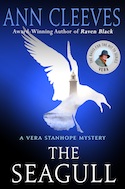
The latest Vera Stanhope mystery, The Seagull by Ann Cleeves (Minotaur), holds a particularly tasty treat: a welcome and more intensive glimpse of the life and times of Vera’s father, Hector. An avid bird-and-egg collector — not entirely legally, mind — Hector ran around with an unsavory but untouchable bunch, including a high-level police officer, a wily wheeler-dealer dude, and a posh gentleman known only as “the Prof.” He also, as it turns out, managed to be an even grumpier grump than Vera, outshining her curmudgeonly reputation on several counts. Vera handles the family baggage surprisingly well as she delves into a long-hidden unsolved mystery, tackling old-school corruption, organized crime, and a local town’s earlier heyday as a seaside resort.
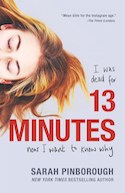
Sarah Pinborough’s Behind Her Eyes, with its heart-stopping twists and highly unreliable narrators, was one of this year’s most whiplash-inducing, adult psychological-suspense novels. With 13 Minutes (Flatiron), Pinborough returns to her YA stomping grounds, and spins teenagers’ tenterhooks and the toxicity of high school into a mind-teasing thriller. Natasha, Hayley, and Jenny are the Barbies, their version of similar cliques portrayed cinematically in Mean Girls and Heathers. But when Tasha nearly drowns and re-friends her childhood bestie, Becca, the stage is set for teen-angst-fuelled intrigue, sex, drugs, and, perhaps, even murder. Just for fun, cast the characters with your preferred actors — film rights have already been sold to Netflix.
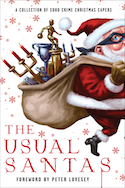
The holiday-infused collection The Usual Santas (Soho Crime), gathers the cream of Soho’s international crime-writing crop, from Stuart Neville and Cara Black, to Helene Tursten and Ed Lin. There’s a canny little heist scene in Cuba from Teresa Dovalpage; a tale of heart-freezing revenge in Manhattan’s Chinatown by Henry Chang; a highly-debatable good-deed-done tale in a remote American ski hamlet by Tod Goldberg; a trip to 16th Century Italy by Gary Corby; and a visit to Jane Austen’s Bath by Stephanie Barron. With a festive multitude of short-story gems to choose from, the honor of best line resides in the book’s eponymous narrative from spy-writing master Mick Herron, in which a plethora of shopping-center Santas, whooping it up on Christmas Eve, realize that something is not quite right: “There’s an elf behind this,” said [one of the Santas]. “Mark my words.”

Julia Keller tackles one of the biggest crimes currently being committed in America in Fast Falls the Night (Minotaur). The devastating, destructive opioid crisis drives this novel, localized in Acker’s Gap, West Virginia, but recognizable across the country. Over a single night and day, as multiple victims succumb to an often-fatal batch of heroin, Prosecutor Bell Elkins and her colleagues race against time to discover the source. Keller delineates the infinite and highly personal experiences impacted by drug addiction – in a town this small, no one is unaffected — as she captures the hopelessness, the stifling, dead-end atmosphere of the situation, and the determination of a bold few to address the crisis while secreting several mysteries of their own.
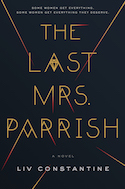
Amber Patterson is onto a good thing in The Last Mrs. Parrish by Liv Constantine (Harper). She’s insinuated herself into the life of the outrageously wealthy Mrs. Daphne Parrish by devious means, angling to replace her as the next Mrs. Parrish ASAP. What stands in her way? Just two suspicious young daughters, Bella and Tallulah, and the conscience of Daphne’s husband, Mr. Jackson Parrish, who clearly adores his wife. In the Parrish family’s opulent, water-front mansion, in their luxurious Manhattan apartment, in Jackson’s beloved motorboat – everywhere the family turns, there Amber is, transforming herself from mousy and timid to glam and glorious, right before their eyes. The latest in a wildly proliferating line of sociopathic characters convinced they are smarter than everyone around them, this is a pleasurably soap-opera-ish thriller from two sisters, Lynne and Valerie Constantine, who clearly had a good deal of fun putting this tale together.
The Quintessential Interview: Joe Ide
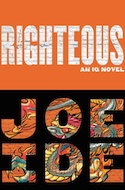
Private eye Isaiah Quintabe’s beat is a rough-and-ready L.A. neighborhood; his best friend and sort-of-partner, Dodson, is about to become a father; and IQ’s determination to solve the decade-old homicide of his older brother is gathering heat. Thus opens Righteous (Mulholland Books), Joe Ide’s second fiery IQ novel in which, to add grist to the investigative mill, Sarita, his brother’s former girlfriend, reaches out for his help, generating an inquiry that encompasses the seamier underbelly of Las Vegas as well as inter-gang warfare. IQ’s smarts serve him in good stead, and it’s excellent fun to watch sidekick Dodson’s resolution to keep up. The other latest reason that Joe Ide is in the news: IQ, Ide and Isaiah’s debut, just won the Anthony Award for Best First Novel.
What or who are your top five writing inspirations?
- Walter Mosley. The original cool breeze. He taught me that it was possible to write a book about an environment like ours and people like the ones we knew, and that there was a readership who would enjoy it. Also, he created Easy Rawlins, the second, original cool breeze. Mosley also taught me that you can wear a fedora and a T-shirt to a black-tie event.
- Elmore Leonard because he writes about lowlifes that are so real they slap you in the face and his dialogue is the best ever.
- John le Carré. I love his precision and intricacy and the tension he creates without violence. He also came up with my third favorite character of all time, just behind Sherlock Holmes and Christopher Robin: the quixotic, emotionally disabled, brilliant George Smiley.
- Don Winslow. He’s just good, that’s all.
- And a tie between Janet Fitch and Mary Karr. Mary Karr for her hilarious, tragic, trailer-trash, so-true-it-hurts biographies, and the writing, the writing. And Janet Fitch for her deeply felt quintessential L.A. novels about quintessential LA characters and the writing, the writing.
Top five places to write?
There are only two. My study with the shutters closed and the door shut and ear plugs in my ears, and the dog underneath the desk as a foot rest. And my outdoor office: a wooden table in the shade of the maple tree and underneath the hummingbird feeder where I am occasionally interrupted by my friend, Hummie (I’m good with names) who is quite used to me now, the dog lying in the cool, damp spot underneath the ferns.
Top five favorite authors?
Elmore Leonard, Walter Mosley, John le Carré, Hunter S. Thompson and A.A. Milne.
Top five tunes to write to?
No music. I’ll sing along or bob my head or tap my foot and I have enough trouble focusing as it is.
Top five hometown spots?
At the moment, Tacos Por Favor; Petty Cash Taqueria; Los Originales Tacos Arabes de Puebla; Sushi Sasabune; and the park along the bluffs in the Palisades overlooking Santa Monica Bay.
Thursday Comics Hangover: It's alive! Alive!
Victor LaValle is one of the most underappreciated novelists in America today. His debut novel The Ecstatic was less a shaky first outing and more a spectacular announcement of a singular talent. His last three novels — Big Machine, The Devil in Silver, and The Ballad of Black Tom — have addressed America's complicated relationship with race through the lens of horror fiction. (And before you ask, LaValle began exploring this relationship years before Get Out was anything more than a figment of Jordan Peele's imagination.) When it comes to genre fiction, he's one of our most fearless adventurers.
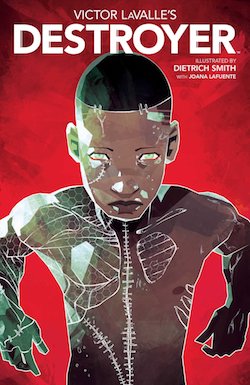
And now LaValle has conquered another medium. Yesterday saw the publication of the sixth and final issue of LaValle's very first comic series, Destroyer. Illustrated by Dietrich Smith, Destroyer is a modern-day recasting of the Frankenstein story. But this isn't a reboot; Destroyer is a sequel to Frankenstein. The original monster from the Wollstonecraft novel is still alive and menacing the characters of this story.
Destroyer's protagonist is a black teenage boy named Akai whose mother brings him back from the dead after he's slain by police. The book explores the mother-son dynamic and, since the mother is a descendent of Victor Frankenstein, the monster serves as a kind of lingering ancestral wrath. It's a story of grief and tradition and learning what you can and can't control about the things (and people) you create.
This sixth and final issue of Destroyer combines all those threads into one climactic scene. Every character gets an opportunity to make their case. ("Must be nice to be a father," Akai's mother notes bitterly, "Mothers are weighed on a broken scale.") The dynamics shift and realign and play out against a backdrop of America's forgotten history.
LaValle and Smith are creating high-level comics here. It's a book that is as personal as a love-letter, as brutally honest as a confession, and as of-the-moment as your Twitter feed. The final confrontation between Akai, his mother, and his father is just as internal and complex as any literary novel, but — because this is comics — it involves a giant, lumbering mech-battlesuit in mortal combat with a reanimated monster and a severed head.
The collected edition of Destroyer is set to arrive in bookstores in March of next year; if you've enjoyed allegorical takes on race in America like The Underground Railroad or Get Out, I urge you to reserve a copy at your favorite independent bookstore today.
You will never be completely rid of James Frey
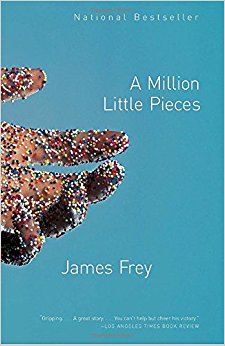
Ugh, looks like James Frey's "memoir," A Million Little Pieces, is about to become a movie. The book, which unhelpfully and unthoughtfully applies toxic masculinity to questions of addiction and substance abuse, became famous when it was selected as an Oprah's Book Club pick back when Oprah's Book Club was a thing. And then it became even more famous when it was revealed that Frey made up a lot of the book.
At the time, the hot takes questioned whether memoirs need to be entirely truthful, but I feel as though those hot takes missed the point: when you write about overcoming addiction, a lot of people who are struggling with addiction look to your memoir for hope and guidance and emotional support. The fact that Frey lied about his struggles — in fact glamorized and simplified them — very likely caused harm to many people who desperately needed help.
Frey was famously raked over the coals by Oprah for the falsehoods in his book, but I don't know if he ever answered for the harm he likely caused for people struggling with addiction. And in fact Frey is now the overlord of a horrible YA fiction farm. When you combine that with the fact that Pieces is becoming a film, you get a real picture of how male mediocrity rises to the top against all odds.
Anyway, I don't want to malign a film before it's even made. But if the movie version of Pieces doesn't incorporate the meta-narrative about the falsehoods somehow, or address Frey's irresponsible behavior as an author, I have a hard time seeing how it will be worth anyone's time.
Your Week in Readings: The best literary events from October 25th - October 29th
(Note: This calendar originally had a Seattle Arts and Lectures event scheduled for Friday. That event has been moved to Janauary. I apologize for any inconvenience this may have caused.)
Wednesday, October 25: Where the Past Begins Reading
Back when she was touring for the very first time, The Joy Luck Club author Amy Tan was heartened to receive a huge audience at her Elliott Bay Book Company reading in Seattle. She’s packed them in ever since, and even though she’s a bestselling author dozens of times over now, Seattle still holds a special place in her heart. Tonight, she debuts her memoir. Seattle Public Library, 1000 4th Ave., 386-4636, http://spl.org. Free. All ages. 7 p.m.
Thursday, October 26: Boyfriends Launch Party
See our Literary Event of the Week column for more details.
Vermillion Art Gallery and Bar, 1508 11th Ave., 709-9797, http://vermillionseattle.com. Free. All ages. 7 p.m.
Friday, October 27th: Juan González with David Rolf and Frank Blethen
NPR journalist González comes to town with his new book Reclaiming Gotham: Bill de Blasio and the Movement to End America's Tale of Two Cities. He's joined onstage by the publisher of the Seattle Times and one of the leaders of Seattle's Fight for $15 movement. This should be a great event. Impact Hub, 220 2nd Ave S, https://impacthubseattle.com, 7:30 pm, $5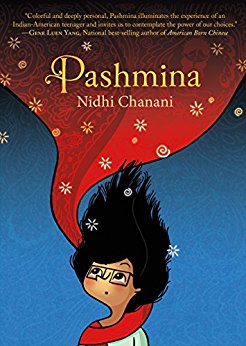
Saturday, October 28: Pashmina Reading
This afternoon, Nidhi Chanani reads from her comic for young readers that tells the story of a young woman who wonders about her parents’ old lives in India. With the help of a magic pashmina, young Priyanka Das travels to an idealized version of India. Third Place Books Seward Park, 5041 Wilson Ave S, 474-2200, http://thirdplacebooks.com. Free. All ages. 7 p.m.
Sunday, October 29: Smile Reading
Beloved novelist Roddy Doyle (author of The Commitments and the fabulously titled Paddy Clarke Ha Ha Ha) returns to town with a new novel that’s all about memory. One day, an old Irish man who’s trapped in his routines is approached by a man from his past — a man he has no memory of meeting. Is he starting to lose his mind? Pigott Auditorium, Seattle University Campus Walk, 652-4255, http://townhallseattle.org. $5. All ages. 6 p.m.
Literary Event of the Week: Tara Atkinson at Vermillion
When Tara Atkinson lost her favorite bookstore, she decided to do something about it. After the ferociously independent Pilot Books closed down, Atkinson and her friends came together to create the APRIL (Authors, Publishers, and Readers of Independent Literature) Festival, which ran longer than Pilot Books and, arguably, made more of a mark on the city then the bookstore which inspired it.
Atkinson was not just a curator of the APRIL Festival's wildly entertaining events. She was also a participant in the first APRIL pub crawl. She played an interstitial role in the evening, reading a story about fast food burgers while sitting in a little red wagon being pulled down Pine Street in an effort to lead audiences from bar to bar. (At one point during the wagon reading, I turned to author Stacey Levine and confessed that I worried Atkinson was going to get hit by a car or that her driver would lose control of the wagon and that she might die in an accident. Levine considered this for a moment and replied, "I don't know, Paul. It takes a lot to kill a person.")
Atkinson's departure from APRIL — she wanted to work on her own writing — marked the beginning of the end of the festival. The events of APRIL required both Willie Fitzgerald's curatorial exuberance and Atkinson's deliberative eye.

But now Atkinson has turned that eye more seriously to writing, and her first book is in the world. I reviewed Boyfriends last week, calling it "distant and tinged with sadness," as well as "very broadly funny." It's the perfect way to introduce Atkinson as a writer into the world: an affordable e-book, about 40 pages long, with not a word askew.
And now it's time for a party. And as we've already established, Atkinson knows how to put on an event. On social media, Atkinson has been requesting that people send her photos of their boyfriends. She's planning to use those photos as part of her reading. I don't know exactly what Atkinson's scheme is, but she's earned our trust through years of APRIL events, and so I can't wait to see what happens.
Vermillion Art Gallery and Bar, 1508 11th Ave., 709-9797, http://vermillionseattle.com. Free. All ages. Oct. 26, 2017, 7 p.m.
Jennifer Schuessler writes for the New York Times:
Leon Wieseltier, a prominent editor at The New Republic for three decades who was preparing to debut a magazine this fall, apologized on Tuesday for “offenses against some of my colleagues in the past” after several women accused him of sexual harassment and inappropriate advances.
As those allegations came to light, Laurene Powell Jobs, a leading philanthropist whose for-profit organization, Emerson Collective, was backing Mr. Wieseltier’s endeavor, decided to pull the plug on it.
We'll likely be hearing a lot more about men behaving badly in the literary world in the near future. It's important that we don't make apologies for these men, or allow them to remain in positions of power. It's important that we let the world know that we don't approve of this kind of behavior. It's got to stop. The first step toward a more safe, more inclusive future: women need to be in more positions of power in the literary world, starting right now.
Book News Roundup: Three tweets
Tweet #1: Here's the beginning of an important thread about why libraries matter now more than ever:
Hang tight folks, because I am about to drop some necessary knowledge on you. First off, library usage is on the RISE motherfuckers. https://t.co/reWrJj3XCo
— TheAngriestLibrarian (@HalpernAlex) October 23, 2017
Tweet #2: Here's a fantastic little artifact from Seattle comics history:
Early Lynda Barry cartoon gracing the walls of the UW Daily offices. (Photo by Daily alum Midori.) pic.twitter.com/q8XurIyScE
— William Kennedy (@ratzkywatzky) October 24, 2017
Tweet #3: I don't know if it's real or not, but this book cover is 12th-dimensional-chess levels of bad.
Having a slow Monday, so I guess I should reshare my favorite bad book cover ever, no don't thank me, this is a gift that belongs to us all pic.twitter.com/sq2yxp1rAb
— BizarreVictoria (@BizarreVictoria) October 23, 2017
New magazine looks at mental health
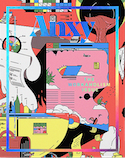
A new magazine about mental health, Anxy, is currently running a Kickstarter to fund its second issue. The name is so odd that it takes a moment to reckon with it — but in a world of short and frivolous names for apps and startup, Anxy feels weighted with meaning.
I asked Anxy Editor-in-Chief Bobbie Johnson — who was a founder of Matter Magazine, and went on to work for Medium after their acquisition of Matter, so no stranger to digital publishing — why print was the right format.
"I love the internet, but one of the things you tend to lose thanks to the context-flattening meat tenderizer of the web is the idea of packaging — stories and ideas that are sequenced to create particular effects, or pieces that are juxtaposed to help cast light on each other as well as provide. That intimacy, that quality of wholeness, is something we think is important when you’re having complex conversations about people’s mental health."
They do publish some pieces online, like this interview with Margaret Atwood, or this essay by Seattle writer Ijeoma Olou, both in their first issue, with the theme of Anger.
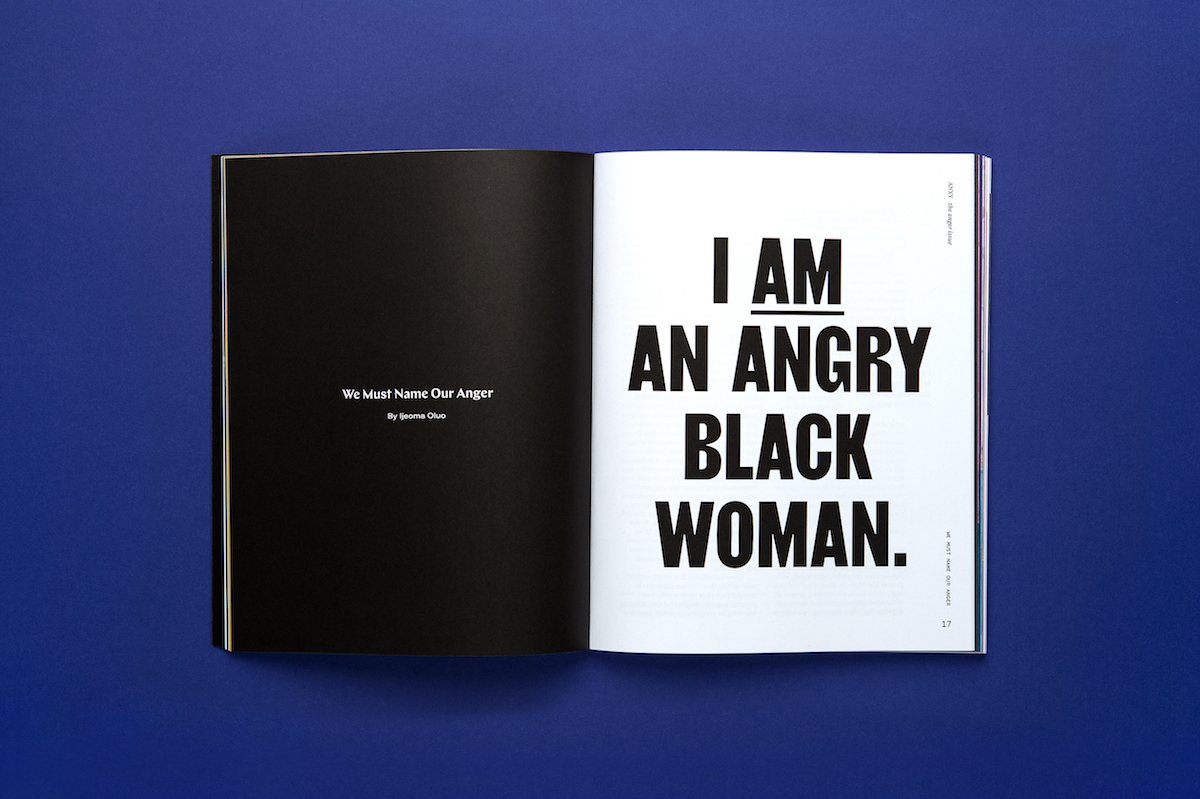
It's easy to imagine a magazine that focuses on mental health reading like a fitness magazine, with lists and exercises, and a load of top-down advice. But, Johnson says, "a magazine about fitness is based on the underlying social agreement that being fit is good. Talking about mental health, though, is a much trickier proposition. It’s still stigmatized to a large extent — or, even when it’s spoken out loud, it’s easily dismissed as whining, or typical intergenerational bullshit. Anxy isn't self-help, ten steps to success kind of stuff; it’s something reflective, that you can be proud to be seen with, something that can be a conversation starter, not a todo-list creator."
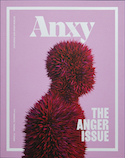
The second issue, if the Kickstarter is successful (they're about 75% of the way there at this writing), will focus on Work. The magazine is ad free, so Kickstarter is how they fund the printing and distribution of the magazine.
It seems like a great idea, but there are so many potential traps in a magazine dealing with mental health. "We're doing it because we didn't see anyone else stepping up," Johnson says. "We're asking people to open a door on their lives."
Given the solitary and life of writers, seeing work dedicated to the topic of mental health seems like a fantastic idea. Their Kickstarter ends in six days, so grab a copy quick if you think this might be interesting to you.
Glugs of Amber Winelight Lay
glugs of amber winelight lay like legs
splayed/splashed/slayed on the glasswood floorwhat one might think of as a heavy
smoke-colored cover of clouds is no, is
actually smokehoney candies on the fresh white pillow case:
the pillow itself the pillow of a woman long dead
smelling of that woman’s bed ilay my deathhead down
Fly to the Assemblies! calls Seattle to action
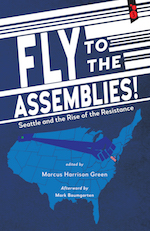
We're excited to bring you an excerpt from Fly to the Assemblies!: Seattle and the Rise of the Resistance, courtesy of sponsor Third Place Press this week. Fly to the Assemblies is a new anthology of writing from Seattle's top thinkers — journalists, activists, and others — that speaks to what the city is already doing in this time of political crisis and what we need to do next. As editor, Marcus Harrison Green has brought together a stunning group of voices to engage you on the page — or in person at the Nov. 2 launch event.
Third Place Press chose "On fear and anger and fighting back,” by Reagan Jackson, to share with Seattle Review of Books readers. You know Jackson's writing from Crosscut, The Seattle Globalist, and elsewhere; this piece is a suckerpunch of truth and fury. Read the essay, and an eloquent note about the book's publication from Third Place's Vladimir Verano, on our sponsor page.
Sponsors like Third Place Press make the Seattle Review of Books possible. Did you know you could sponsor us, as well? If you have a book, event, or opportunity you’d like to get in front of our readers, reach out and let us know. We’d be happy to reserve a spot for you.
Find out how your favorite literary publication did in the first VIDA count of the Trump era. (If you're unfamiliar with VIDA, it's an organization that counts the number of women — and now, nonbinary — authors in literary publications. One of our very first posts on the Seattle Review of Books was an interview with author Nicola Griffith about the importance of counting women in media.)
This year saw progress at a number of major literary magazines, including the New Yorker and Tin House and the New York Times Book Review. But other organizations like The Nation and Harper's, are actually on the decline. It seems significant, doesn't it, that bylines by women declined at stalwart liberal magazines during the same year in which Donald Trump defeated Hillary Clinton to win the presidency?
This morning, local arts organization Artist Trust announced the recipients of their Grants for Artist Projects (GAP). The 61 GAP recipients will (with two exceptions) receive $1500 to complete or further the work on projects that are currently in process. (One of the artists will receive a special $2000 grant, and another artist will receive a retreat in Port Townsend with an additional $500 stipend.) The award is intended to benefit "emerging to established artists of all disciplines across Washington State."
The judges for the literary recipients this year were poets Quenton Baker and Ellen Welcker and novelist Bharti Kirchner. Here are all the literary GAP winners:
- afrose fatima ahmed
- Clayton Aldern
- Cali Bagby
- Gabrielle Bates
- Katrina Carrasco
- Suzanne Edison
- Eroyn Franklin
- Sally Green
- Apple Plotnick-Jannota
- Laura Lucas
- Sarah Mangold (Mangold is the winner of the residency grant mentioned above.)
- Judith Skillman
- Ana Maria Spagna
- Lydia Swartz
- Joanna Thomas
- Julieta Vitullo
Congratulations to all the winners. Now get back to work!
After years of drought, Kary Wayson is writing poetry again
The word I’ve most often applied to our October poet in residence, Kary Wayson, is “patience.” Wayson’s poetry feels deliberate and constructed in a way that the work of many Seattle poets does not. Every word is there for a reason, and if you were to extract even one syllable, the whole thing would crumble to a pile of typeface at the bottom of the page. In a literary scene that tends toward expressionistic and reactionary poetry, Wayson stands out as a contemplative figure.
And too, Wayson isn’t one of those poets who overwhelms with frequent appearances. Though she regularly teaches poetry classes at Hugo House, months and even years have passed without Wayson’s name appearing on the poster for a major reading. It doesn’t feel like she’ll just apply her time talent to any old event. She is a writer who does not produce a lot of work, who doesn’t overwhelm with her presence, and that makes her a refreshing rarity in 2017.
Ask Wayson about her poetic patience, though, and she’ll attribute it to more practical reasons. “I've always sort of worked the opposite hours of everybody else,” she explains. When she left school, she wanted to find a career that provided “the best money I could make for having the most amount of free time, which is in restaurants.” Wayson has waited tables for many years, and so the prime time for readings — nights and weekends — has been largely inaccessible to her.
Occasionally, Wayson tells me she wishes she could be more of a part of the scene. “Sometimes I feel, like, ‘I’ve got to change my life. I got to get a day job — a real job, where I can take time off of work and get paid for it and be a part of the literary community.’ And then other times it seems perfectly fine.”
As a writer, she’s very deliberate: poetry is an exacting quest for perfection. She uses the term “etched in stone” to describe her work. She describes her process as “a slow accretion” and says she wants to build something sturdy, something “that lasts” for years — generations.
Lately, she’s been reading the work of John Ashbery and Richard Wilbur. “I spent the morning exhuming this poem of [Wilbur’s]. Each syllable is chosen with care.” That’s important to her. “It’s almost an affront to me when the work is sloppy,” Wayson confesses. Poetry is “not just something that’s broken into lines. It’s something that has been labored over.”
But there’s another reason beyond perfectionism why Wayson hasn’t been reading her poetry in public. Until a couple months ago, she admits, “I hadn’t written anything for probably three years.”
This seems hard to believe. She hasn’t written anything at all? “I’ve done journaling and some little failed attempts, but, no. Really, nothing.”
Thankfully for us, the dry spell is over. “The writing is coming out now,” she says, relieved. “But it’s got these strangenesses,” she says. And she’s been doing work “letting strangeness of syntax, and strangeness of ideas, and strangeness of image stay there [in the poem] hopefully in a way that’s not just weird but achieves something.”
Is it appropriate to say that Wayson is working at giving up a little bit of control of her work? “Yeah!” She seems excited by the idea, “and it’s something that I don’t want to figure out because then it might go away. I want to support it.”
Wayson is now experimenting with techniques to bring weirdness to her work. She’ll copy pieces of her journal entries backwards, word-for-word, just to see what kind of juxtapositions that will draw out. She’ll then explore those unexpected connections in poetry.
So what’s next for her? “I have a manuscript that I've been shopping around that’s been a near-miss at some really nice presses for years,” she says. She hasn’t given up hope on that one — “I’m still working on that, and that will probably be the next thing that comes out” from her in book form.
And the new work is still coming strong. “I have something right now that I’m working on that feels like it will be a thing,” she says, and her enthusiasm for the work is palpable. “I’m not talking Rilke here,” she qualifies, “but for me, it’s something I can hang my hat on.”
Is that thrilling to feel, after such a long drought? “Yeah, it’s nice to know it’s there, and it’s nice to have been doing this for long enough now that I know to not press it,” Wayson says.
She’s learned that much of crafting a piece of writing, for her, “is doing it and then stopping and letting it be, and then going back and trying some more, and then probably fucking it up a little bit, and taking that back out.”
“It really all takes such a huge amount of time,” Wayson says. That’s not a complaint, coming from her. In fact, she sounds like she’s having fun.
The Sunday Post for October 22, 2017
Each week, the Sunday Post highlights a few articles good for slow consumption over a cup of coffee (or tea, if that's your pleasure). Settle in for a while; we saved you a seat. You can also look through the archives.
Judging Books by Their Covers
Jason Diamond loves books, and the Vintage Contemporary imprint in particular (you’ve almost certainly got one or two of those iconic covers on your shelves, whether you know it or not). This essay is steeped in his passion for the series, but it’s more truly a love letter to collecting — to how physical objects carry stories in their making, and to how paying respectful attention to small, necessary details makes life richer and more explicable.
I first loved Bright Lights, Big City as a teenager stuck in the Chicago suburbs in the 1990s. To my 15-year-old, Clinton-era mind, the book was moody and weird, an example of the kind of urban malaise I would have preferred over the suburban brand I’d experienced growing up. I can’t recall a book so perfectly set up by what was on the cover — a man in a trench coat framed by the neon glow of The Odeon restaurant and the glittering World Trade Center. McInerney’s Manhattan was the city I wanted to go to, in all of its decadent and gritty glory. If I was going to be lonely, I’d rather be lonely around people like me.
The Secretive Family Making Billions from the Opioid Crisis
In late September, Seattle sued Purdue Pharma, the nation’s largest makers of opioid drugs. That’s the stuff you get after major surgery, and also the stuff that’s created an epidemic of addiction across the United States. The lawsuit hoped to recoup the costs of epidemic addiction in our city.
Turns out, the people manufacturing those drugs are actually people, and in fact a single family: the Sacklers. The Sacklers are the Kardashians of pharmaceutical-style heroin, if you will, though with a much smaller social media presence. Christopher Glazek steps up to help with their publicity problem.
The descendants of Mortimer and Raymond Sackler, a pair of psychiatrist brothers from Brooklyn, are members of a billionaire clan with homes scattered across Connecticut, London, Utah, Gstaad, the Hamptons, and, especially, New York City. It was not until 2015 that they were noticed by Forbes, which added them to the list of America’s richest families. The magazine pegged their wealth, shared among twenty heirs, at a conservative $14 billion. (Descendants of Arthur Sackler, Mortimer and Raymond’s older brother, split off decades ago and are mere multi-millionaires.) To a remarkable degree, those who share in the billions appear to have abided by an oath of omertà: Never comment publicly on the source of the family’s wealth.
What Miyazaki’s Heroines Taught Me About My Mixed-Race Identity
I’m not saying that anybody’s princesses are better than anybody else’s. But isn’t there something grittier, more badass, and ultimately more relatable about Hayao Miyaziki’s heroines than those in the Disney catalog — no matter how hard mainstream American cinema tries to evolve?
Nina Coombs thinks so. Part Japanese, part American, in this short essay, she traces how Miyazaki’s heroines helped her understand a physical transition that made palable her position at the tipping point between two worlds.
That summer, I frequented bathhouses similar to those in Spirited Away with my mother and sister. One day I stood under a showerhead, rinsing my body of dirt and grime before entering the bath, and noticed that the arc of my stomach was jutting softly from my sternum. I had never seen my stomach before, not from this vantage point, with my chin tucked and hair wet. I had always been concave, a pocket of negative space ballooning between my ribcage and hips. To see my stomach take up space was new and strange. As I stared, water ran into my eyes and questions churned in my head: What was I becoming? Was I becoming an American? Was I not Japanese anymore? Had I ever been Japanese?
The Loneliest Polar Bear
I almost didn’t read Kale Williams’ story about Nora, an infant polar bear abandoned by her mother. In fact I was asked not to read it: I’ve been found on my knees sobbing in front of the BBC’s Planet Earth, I’ve been gently asked about my welfare by a bartender at Portland’s Tugboat Tavern (rest in peace, Tugboat Tavern!), where they used to show nature programming instead of sports. (Barnacle geese, with explanatory sound turned off, are a tragedy of Shakespearean proportions.)
But proceed without fear. Except for devastating questions about climate change, the human race’s impact on the creatures with whom we share the planet, and the value of saving a single animal in the teeth of the Earth’s sixth mass extinction event, this is a happy story told in a fabulously furry multimedia presentation.
Aurora had been gone for 30 minutes. She’d never left Nora for this long.
She wandered the rooms of the compound, seemingly deaf to the sounds of her daughter.
Inside the trailer, the tension was thick. Nora’s cries reminded the keepers of their own children, only louder and more urgent. As long as her vocals were strong, they were willing to wait.
The women watching had decades of experience hand-raising jungle cats, livestock and primates. The prospect was starting to hit them: Would they have to raise a polar bear?
Seattle Writing Prompts: Seattle Great Wheel
Seattle Writing Prompts are intended to spark ideas for your writing, based on locations and stories of Seattle. Write something inspired by a prompt? Send it to us! We're looking to publish writing sparked by prompts.
Also, how are we doing? Are writing prompts useful to you? Could we be doing better? Reach out if you have ideas or feedback. We'd love to hear.
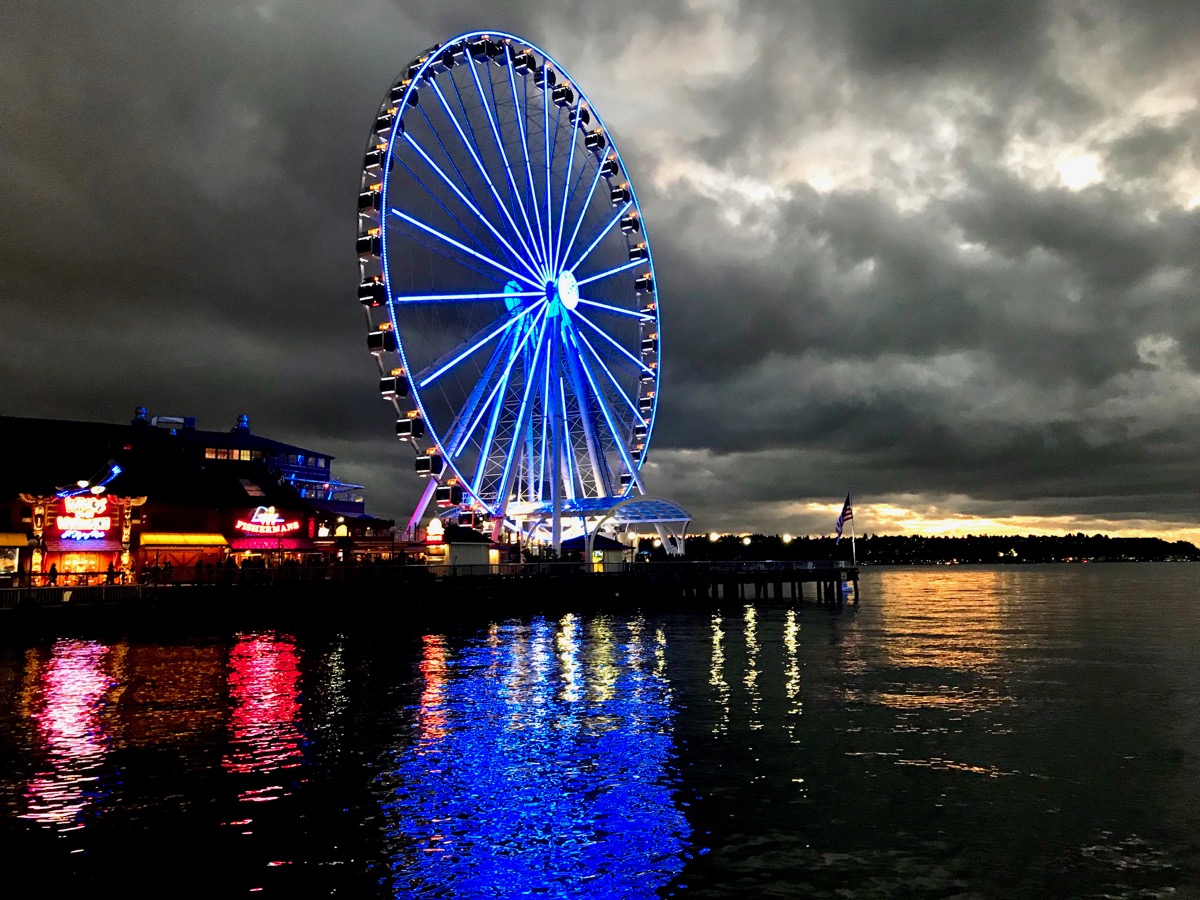
All it takes is $14 to get hoisted 175 feet in the air in Seattle. You could do it for cheaper in different locations — an elevator, say, in the middle of a building without a view except of the numbers as they rise — but to do it right on the waterfront with a view takes $14 and a little patience, depending on how busy it is, at the great wheel.
Pier 57 is full of amusements, some of them faded in the glory of their carnival ways, but the wheel is new, opening in 2012. One day there was no wheel, and the next, there it was: the LED lit exterior, which is themed to whatever event is going on around our city. At least that's what it felt like from the outside, but to pier owner Hal Griffith had been dreaming about the wheel for thirty years, the inception probably felt much slower. Now he wants to build a gondola aerial tram down Union street.
Have you ridden the wheel? Have you done it alone, or with family when they're visiting from out of town? Did you look down and see the water below, a ferry going by? See the cars on the Viaduct? Did it feel like you were in a model of a city, instead of a real city? Did it feel both removed from the city and, also, at the same time, like you were in the city in a kind of serious way that only a tourist might usually experience?
The wheel is smaller than the London Eye, which raises 443 feet above the sinuous Thames. But Seattle is not London. We're a bustling growing city, but we're still a colloquial one. Our ferris wheel is big, but not the biggest, and that's okay with us. We're a people that let other drivers in, when we can. We take pride in our buildings being "tallest west of the Mississippi", not tallest in the world. The Seattle way is about exuding a certain modesty, in an extravagance sense, not in a moral sense. It's the Scandahoovian in us. Don't make too much of yourself. Put your nose down and get to work.
So, $14 is a modest price for a modest ride in a modest city, with immodest beauty. $14 to sit on a seat and rotate in the air for a few minutes and wonder about your place in the world. If that's what you want, and you're not scared of heights, it's waiting for you.
Today's prompts
It was perfect when they got stuck, not at the top, exactly, but at the 2 o'clock position if you were to look at the wheel from the north. That meant they had a stellar view of the sunset and the peninsula, the Bainbridge ferry passing right nearby. The gondola stopped, and he dropped to one knee, and reached into his pocket to bring out the little velvet ring box. He only regretted he didn't have some photographer capturing the moment with a telephoto lens. As he dropped, the gondola swung, a bit, and his soon-to-be fiancée slammed her hands to the sides of the swinging container, and shouted "I'm so tired of being scared. I never feel safe with you. I need to break up with you" before she reached up and pressed the emergency button on the ceiling.
Nothing excited Baby Boy mouse more than the idea of riding inside a gondola in the Great Wheel. "You are never to go near that thing!" said his mother, pretty much every day when they would scurry along the roof line to go foraging for food. Baby Boy would stop, the rain wetting his fur, and stare at the glowing wheel until his mother would come to nudge him along. And again, at night, tucking him in "You are never to near that wheel. It's too dangerous." She would make him promise, but he always crossed his claws when he did. It was a cold December day when he finally had his chance.
"You have to decide," he said to his son. "We can't wait here all night." They'd already gone to the front of the line, then bailed out, twice. The dad could see how badly the boy wanted to go, but he was running up against his fear. The choice was to be brave and do it, or to feel bad about chickening out, no matter if the dad gave him a shoulder squeeze and said it was okay. The boy would be worried about his choice impacting the whole family. The dad knew all this, but also knew the only thing he could offer was pressure to put the boy in the corner, and let him decide. Hope he picked the brave choice, and be kind if he didn't. "And if you don't decide in five minutes, we're just going to leave without doing it. I think we should. I think you'll love it, but it's your choice, buddy." They stood at the rail and watched the wheel, and the dad wondered what was going through the boys head, and watched his watch, hoping he wouldn't have to force them away.
They say there's one car on the wheel that's haunted. Nobody remembers which one — maybe they enter saying "Oh, I'm in car 5" when they climb up to the wheel, but when they leave, they forget as they walk away. They always forget. Some say the ghost came from the pier, a stevedore who was drunk and incautious at work, and so was crushed by a falling crate when this pier was commercial, after it was built in 1902, some say it's a young girl, a tragic figure from a neglected home who died in a way so sad that just to speak of it would cause rain to fall. Some, even, say both visited them when on the wheel, that the gondola was filled with crackling energy and presence, these two figures keeping each other company in the afterlife. But whether the ghosts are him or her or both, those that experience the haunting all report one creepy fact in their telling of their stories....
It was a slow day, nobody in line, and so they let her ride. Nobody knows who told them, exactly, but somebody said it "that's the woman, her husband was just killed." So the widow came alone, and politely asked if she could have a car to herself, and they let her (even though they weren't supposed to), and then when the gondola came around, they asked if she wanted to ride again, and she nodded yes. The third time they didn't even open the car, the attendant saw her tears, and just gave her a sign that he was gonna let her ride again, and she nodded. After that, they just ignored her, knowing when she was ready, she'd let them know. Until then, she rode, and everybody turned their focus to loading and unloading the tourists.
The Help Desk: It's thick book season!
Do you need a book recommendation to send your worst cousin on her birthday? Is it okay to read erotica on public transit? Cienna Madrid can help. Send your Help Desk Questions to advice@seattlereviewofbooks.com.
Dear Cienna,
When I was a kid my parents always had one of those big thick 70s novels going. The Godfather. Roots. Shogun. I was too young to read them then, but I'm thinking that this might be a good time to dig into all those thick, engrossing historical stories. Hell, I might even drum up a few friends and do a themed book club. Any other novel to throw on the pile?
Darrel, White Center
Dear Darrel,
Fall is the best of all seasons – spiders are growing their winter coats, making them perfect for cuddles; drinking whiskey for breakfast can be excused as medicinal; and forests look like living rainbow flags in which every tree's an ally. It is also the best time to get your lineup of epic novels ready before winter blots out the sun and takes a shit on your precious stores of optimism.
You've got a healthy start to your reading list. I'd recommend adding Tolstoy's Anna Karenina, which reads like a melodramatic soap; nevertheless, its eloquence in portraying the constricted roles of "proper" women in society is still pretty topical.
I've also got Roberto Belaño's 2666 and L'Engle's Wrinkle in Time series on my list for this winter. I'dd add them to your list if, like me, you have any stuffy friends or judgy children you're looking to impress.
Kisses,
Cienna
Last night's Lit Crawl was worth braving the traffic apocalypse
Something different in our Lit Crawl coverage this year. Instead of grouping together in an inconvenient cluster, we split up. Paul Constant, Martin McClellan, and Dawn McCarra Bass all attended different readings in venues around the city, thus tripling our ability to cover the amazing variety of events. Even with that, we had to make hard choices, and missed things we wish we hadn’t. But this is the bargain we always make. Lit Crawl comes but once a year, and you will, by design, always see less than you hope, no matter if you split yourself in three or not. But for what we could cover, here’s what we saw.
Phase 1: 6:00pm
Robots, Ray Guns, and Self-saving Princesses at Saint John’s Bar and Eatery
Starting LitCrawl with science fiction is always a good idea. We, sadly, missed SFWA President Cat Rambo delivering a story about a Valkyrie coming to escort a clown to Valhalla during a children’s party, which sounds like a bang-up way to start any night. We were thrilled to see Eva L. Elasigue read from work that she publishes on bonesofstarlight.com, and after her, Caren Gussoff Sumption who read from her novel Three Songs for Roxy, about a character learning to sex chickens as a job— the kind of detail that pulls you into the writing while leaving you curious to see where she could possibly take it — especially given that she takes it to deeply nerdy and human science fiction place. All the while, on a television behind the readers, Nick Offerman drank whiskey and stared at camera.
Seattle Urban Book Expo Author Showcase at Hugo House
As is custom during the first big autumn rain in Seattle, the city’s roads were shut down on the night of Lit Crawl. Why, after all, would anyone expect Seattleites to know how to drive in rain? (In fact, one of our correspondents wound up missing the first phrase entirely due to traffic woes; we are just as mortal as you, dear reader.) So this first Lit Crawl event featuring authors from the Seattle Urban Book Expo started out poorly attended, but gradually filled up as audience members, presumably, abandoned their cars and made their way to Hugo House on foot. Eventually, it was a full house.
The latecomers missed out. Host JL Cheatham II, Kristin Alana, and Natasha Rivers read from their childrens’ books. Alana’s beautiful baby daughter was so proud of her mother’s reading from Cerulean and the Snake that she clapped all the way through.
The last person to arrive at Hugo House due to the atrocious commute was the final reader, Kamari Bright. She was worth the wait. Bright read poems about senility and soul food, and about the difference between fresh orange juice and concentrate (the latter is the result of “trying to make something last longer than it should.”) A natural spoken-word reader, Bright dominated the room’s attention with her poems and closed out the reading in style.
Phase 2: 7:00pm
Fragmented Transmissions: Lyric and Hybrid Essays at Zoë Events
This collection of non-fiction writers read memoir and personal essays to a full, rapt room, even though they had to speak loudly to be heard over the driving rain pounding down on the metal roof of Zoë Events.
The standout here was Molly Thornton, who read the first twelve short pieces from a collection of one hundred 100-word vignettes about embarrassment. Thornton read about her childhood desire to grow to be six feet tall in adulthood, and her disappointment at falling about five inches shy of that mark. (“I have always wanted to be a grand, visible thing.”) She also discussed imagining the children she might one day have, who are “not yet born, but already endangered.”
When regarded singly, each of Thornton’s vignettes was a burnished little gem of economy. Taken in aggregate, they formed something much deeper and complex. If they are eventually published in a collection as beautiful and unique as Thornton’s prose, this book could really prove to be a delight.
Made at Hugo House Fellows Alum Reading at Barça
You may have heard that Hugo House's move into a permanent space has been delayed. While there seems to be no question that they'll ultimately land on their feet, last night's Made at Hugo House reading at Barça was a good reminder of why we should all keep pushing to make sure they get there.
The reading was unmiked, and first reader Ross McMeekin (editor of Spartan) suffered through a certain amount of chair shuffling as the room crowded closer. The excerpt he read from The Hummingbirds (forthcoming in 2018) — a story of teenage lust peeled naked under a preacher's eye — was excruciating and funny, easily reclaiming everyone's attention. Laura Da' read a too-short selection of poems about the mapping of the American West and its consequences for the Shawnee. The poems were rich with detail, powerfully narrative, and delicate in reflection, and her quiet voice carried.
Anca Szilágyi followed with a section from Daughters of the Air, her debut novel arriving next month. She's a lucid and thoughtful writer, with a strong viewpoint and an impressive range (we've been proud to publish her here). Like Da', her interests are both historical and human, and we're excited to see what she does with the space that a full-length manuscript offers.
Quenton Baker closed, and he owned the space, noting that Lit Crawl is like Valentine's Day in elementary school ("waiting to see how many cards you get") then blasting into a set of poems that blurred then tore right through the line between harsh reality and letters on the page. Maybe there's no difference between the two. This is the kind of work we need Hugo House to help Seattle's writers keep making.
Mineral School Resident Reading at Capitol Cider
The event started weirdly, with music playing as Mineral School founder Jane Hodges and Nicole Hardy introduced the event. Even after the music was finally shut off, it became apparent that there was an echoey delay on the mic, and since no one was singing here tonight, it just confused matters in the bustling and overpacked basement of Capitol Cider.
But as soon as Rachel Edelman took the stage, the sound improved and the reading went well. Edelman and Gabrielle Bates read poems. Alumnus Urban Waite read from a thriller, and made the point (or, rather, Nicole Hardy made it on his behalf) that the bathrooms at Mineral School are large, and there aren’t many men, so he had the place to himself.
Putsata Reang — you may have read her devestating and beautiful Modern Love column about coming out to her mother — read from her memoir about growing up in a Cambodian immigrant family living in Corvallis, Oregon, and how everyone picked strawberries during the summer. She remembered how her mother would wash their hands in bleach to make sure they weren’t too brown after a summer in the sun. “We were all locked in the conspiracy of becoming American together.” Reang’s clear, sharp voice, honed by years working as a journalist, centered the listener in her experience in a vital, honest way.
Mineral School has a great thing going on. Writers are advised to apply for a residency.
Phase 3: 8:00pm
Seattle City of Literature Presents: Nic Low in Conversation With Willie Fitzgerald at Hugo House
New Zealand author Nic Low is here in Seattle for a little more than a week as part of an indigenous cultural exchange program established by the Seattle City of Literature organization. This was perhaps the only reading at Lit Crawl with an actual, honest-to-goodness elected official in attendance — Lianne Dalziel, the mayor of Seattle’s kiwi sister city Christchurch, came halfway around the world to see Low read.
Low introduced a sly piece of satire disguised as a sci-fi story about the last man on Facebook. The future that Low imagines — in which kids wearing privacy-enabling scarves over their heads scoff at the idea that people used to put their most intimate information online for free — seems alternately amusing and all too likely.
Low was joined onstage by Seattle author Willie Fitzgerald, who led a conversation ranging from Low’s Maori roots to the similarities and differences between Seattle and Christchurch to the white colonialist roots of leisure hiking. The event placed Seattle firmly in a continuum of international literature, and it made Seattle City of Literature’s purpose feel even more compelling.
Joyland PNW
Joyland Magazine is built on a contradiction that isn’t one: that fiction is both an international movement and grounded in local communities. They have editors throughout the United States and Canada who are responsible for curating stories that define each region's unique character, and they publish by the map — stories are grouped and tagged by location, so readers get to know the flavor of a particular place.
We’re lucky to have the Pacific Northwest editor, Kait Heacock, here in Seattle. Heacock read at the noisy Pine Box with fellow Joyland authors Margaret Adams and Corinne Manning (once of the James Franco Review). Defining the literary character of the Pacific Northwest isn't easy. If Heacock's opening remarks had the hallmarks of a work in progress, that's okay; this community is both diverse and changing fast. And the mix of reverence and playfulness she described bears out, not just for Sherman Alexie and other iconic voices. All three stories read last night carried it: Heacock's "Girl" was headed out of bounds from the line "my lover began as my dentist"; Adams' "Doreen" (coming next issue) takes a woman comfortably padded against unpleasantness into the teeth of the medical system; and Manning's "The Wallaby" stars a sad-clown marsupial who is both heartbreaking and hilarious. All of the authors read well; Manning read with a physical and verbal comfort that pulled both groans and laughter from the chilly (but increasingly well-oiled) crowd.
Lunch Ticket: Saveurs de Poésie at Vermillion Art Gallery and Bar
Meanwhile, at Vermillion, writers published by Lunch Ticket, the literary and arts journal of the MFA program of Antioch University, gathered to read.
“I don’t like white people. Except the ones I’m friends with. And myself” read Meredith Arena, who started with a short poem, then dove into an essay about gentrification, and both the body politic, and the body turning middle-aged (“Of everybody in this house, I pee the most”). She compared her own body to her father’s, and imagining being at her parents house in Staten Island, and running into him on the way to the bathroom in the middle of the night, his underwear drooping. “He’d say hello. Hello.”
Sarah Jones, who read second, has a chapbook coming out in April of 2018 from Dancing Girl Press, and her work was vivid and unflinching, and left us wanting more. Her first poem, a lyrical ode and observation of trailer parks, had a staccato cadence, and contained lines that both amused and shocked. She wrote about being a mother, about being sick of the obligations of the world, about the women she meets at a rainy soccer practice. Jones is no stranger to the Seattle scene — she’s a staff member at Poetry Northwest — but we hope to see more of her work in more places on the way to her first publication next year.
Phase 4: 9:00pm
Sarah Galvin, Robert Lashley, and Timmy Straw at Pine Box
The show at Pine Box started late, but for the poets who ended this part of Lit Crawl, waiting was the least we could do. First up was Timmy Straw, whose poems, laced with liturgy and questioning, are ornate carved boxes that fit snugly. “God built the world in seven days. It took him much longer to leave,” was one resonating line. She said “We’re all temporarily in a band,” about her and Robert and Sarah, and it was true, this night. It felt like a performance.
Robert Lashley continues to be one of the most powerful readers you could hope to experience, and his first few poems were delivered with the kind of aplomb Seattle audiences have come to expect, but more reserved than he often is — those who have seen him know he grows beyond himself on the stage, extending in presence like a man who suddenly gained ten feet of height when in front of a mic. But it was his newest work, from his book-in-progress Green River Valley that provoked the strongest reaction. The poem, “Songs for the Commencement Muralist in Gentrified Neighborhoods” is a multi-part piece, part lament, part prayer, part gospel, that ended in Robert singing, a clear voice, loud and true, evoking something so powerful and immediate that stunned silence and tears was the response from those all around. Then, thunderous applause. It was a stunning moment, and showed the evolution of his form, and the power of a single man, standing alone, and bearing witness.
Sarah Galvin was one of few local poets that could follow the stunned room after Lashley walked offstage, and, as always, she did it with confidence, style, and a wry smile that telegraphed that she was on to the joke before you, and the joke was really goddamned good. She read mostly new poems, one titled “Unlimited Clean Eggs”, brought down the house in abrupt and overwhelming laughter. It undersells her to say she’s the funniest poet around — Galvin is funnier than most professional comedians. But unlike that set, her humor is often settled in uncomfortable skin, with piercing insights amidst the laughter. One thing, however, is certain: her sense of timing is impeccable, and her game, and poems, seem to be getting tighter and funnier and more evocative all at once.
And beyond that, she’s the one who asked these poets to come together, to close out Lit Crawl at Pine Box. The band that she assembled? Mic drop all around.
Seattle Poetry Grid Reading at Vermillion Art Gallery and Bar
It was appropriate to end our night at a celebration of the legacy of Seattle’s first Civic Poet, Claudia Castro Luna. Three readers joined Luna to share their favorite poems from the Seattle Poetry Grid, a map of geographically specific poems created by Luna.
The readers shared poems about branches of the Seattle Public Library, about the eccentrics who make a neighborhood feel like a home, about the Seattle-y autumn moment when you realize that the damp gray blanket on top of the sky isn’t going away for another five or six months. Lynn Miller, Brian Roth, and Shin Yu Pai joined Luna, along with a surprise visit from Seattle poetry star (and Poetry Grid contributor) Quenton Baker.
At the end of the night, Luna discussed her decision to include poems written in foreign language, untranslated, in her grid. In a recent media appearance, Luna was asked if she believed that decision could possibly make some people — presumably, English-speakers — feel excluded from the project.
In the end, Luna announced, she decided to keep the poems as-is, in their own beautiful languages, there on the grid. She made that decision, she insisted, “not so others feel alienated” but rather “so everyone feels included.” There’s no better way to describe Lit Crawl’s celebration of Seattle’s wide-ranging literary scene than that; Luna’s legacy as our first Civic Poet is secure.
True Stories of #FML at Capitol Cider
It was reasonable to expect that the final leg at Capitol Cider — plugged as nonfiction essays with the theme "fuck my life" — would be sardonic, silly, and self-mocking. Brian McGuigan delivered brilliantly on that expectation, shredding his own dignity with a series of stories about online dating as a single dad. His bit was a stream of one-liners ("my texting had all the flirtation of a ransom note"; the good-night kiss "had a sensible amount of tongue") and dating stories as short and delicious as his profile handle ("ilovedembooks").
His fellow readers, Sasha LaPointe and Kristen Millares Young, had darker takes. LaPointe, speaking as an indigenous writer and a victim of sexual violence, opened with an extended and lyrical piece about survival, resilience, and monsterhood. She was barely audible beyond the front rows — too bad, what she had to say deserved to be heard by all — but the room held still and listened hard for as long as she wanted to talk.
It was Kristen Millares Young, though, who brought the evening home. Millares Young is an award-winning (remember Snow Fall?) and broadly published journalist, and she delivered an extraordinarily thoughtful piece about the threat of rape, and the different kinds of violence to which it gave birth — including the threats she made, as a white woman (a "Cuban cracker" as she jokingly called herself), to deter the black man who had her temporarily hostage in a hotel van. The essay is forthcoming from Moss; watch for it.

